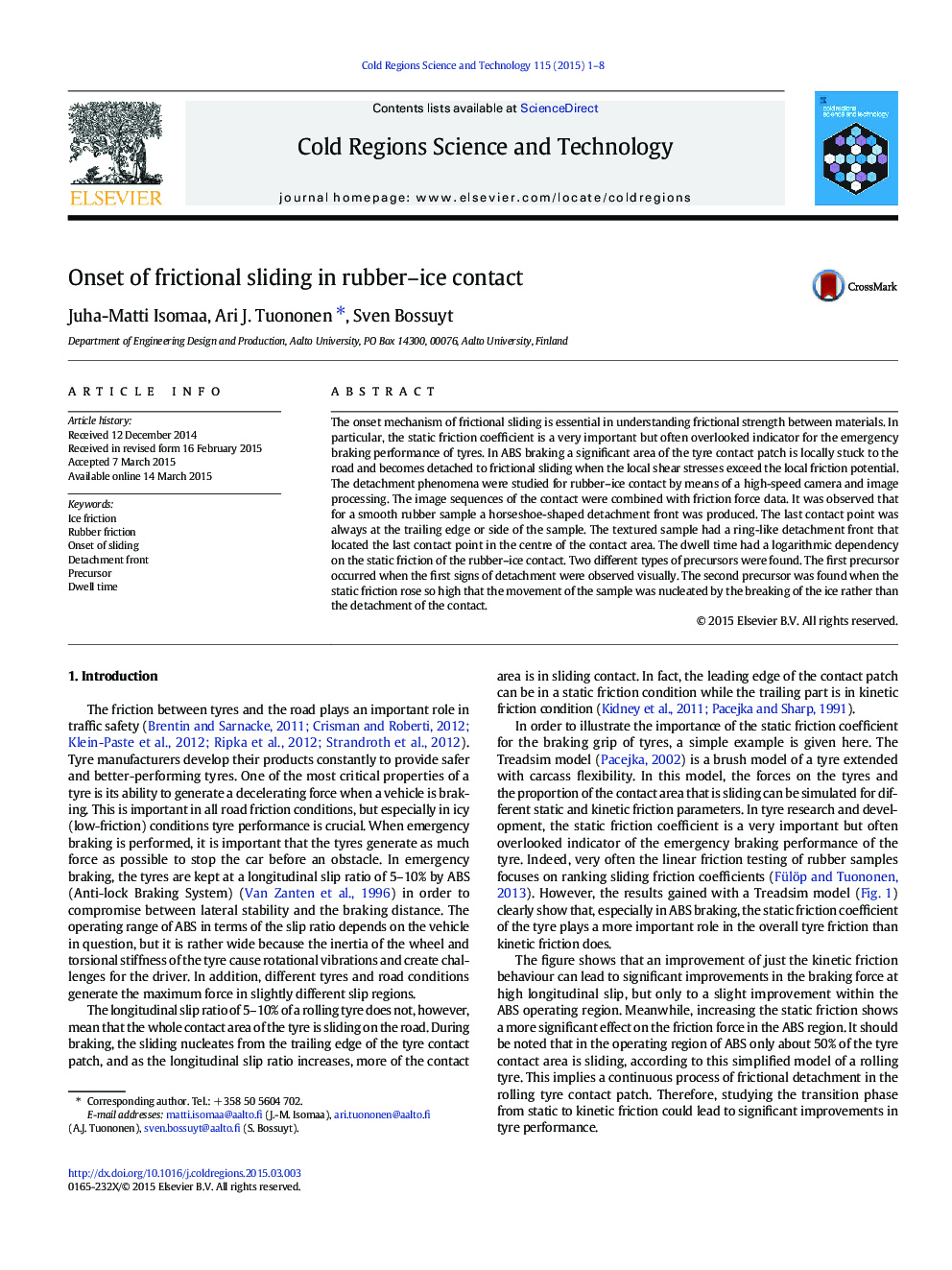| Article ID | Journal | Published Year | Pages | File Type |
|---|---|---|---|---|
| 6426835 | Cold Regions Science and Technology | 2015 | 8 Pages |
â¢The detachment pattern can be altered by surface texturing.â¢First precursor occurs with first signs of detachment.â¢Second precursor occurs in case of ice cracking.â¢Dwell time increases static friction with logarithmic dependency.
The onset mechanism of frictional sliding is essential in understanding frictional strength between materials. In particular, the static friction coefficient is a very important but often overlooked indicator for the emergency braking performance of tyres. In ABS braking a significant area of the tyre contact patch is locally stuck to the road and becomes detached to frictional sliding when the local shear stresses exceed the local friction potential. The detachment phenomena were studied for rubber-ice contact by means of a high-speed camera and image processing. The image sequences of the contact were combined with friction force data. It was observed that for a smooth rubber sample a horseshoe-shaped detachment front was produced. The last contact point was always at the trailing edge or side of the sample. The textured sample had a ring-like detachment front that located the last contact point in the centre of the contact area. The dwell time had a logarithmic dependency on the static friction of the rubber-ice contact. Two different types of precursors were found. The first precursor occurred when the first signs of detachment were observed visually. The second precursor was found when the static friction rose so high that the movement of the sample was nucleated by the breaking of the ice rather than the detachment of the contact.
